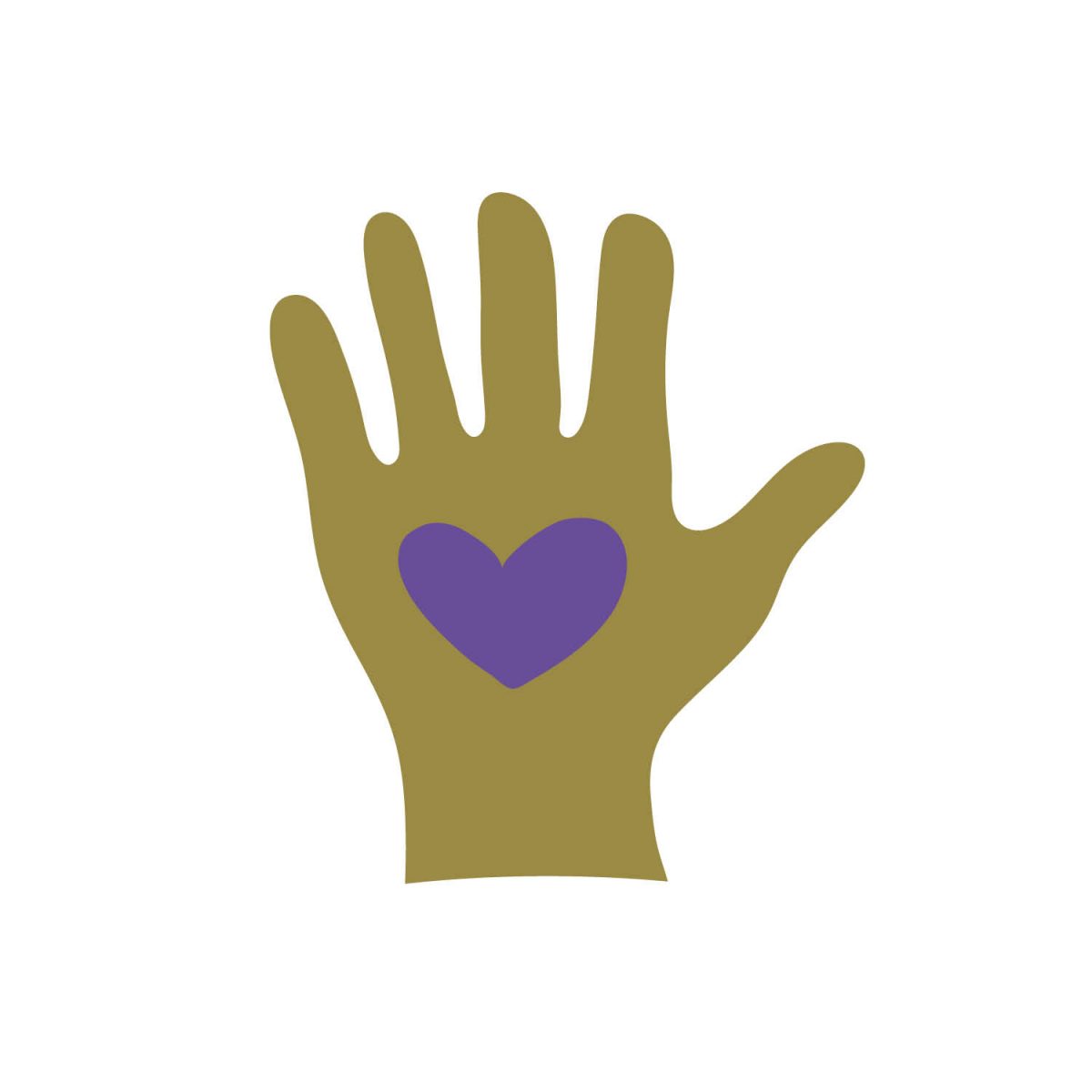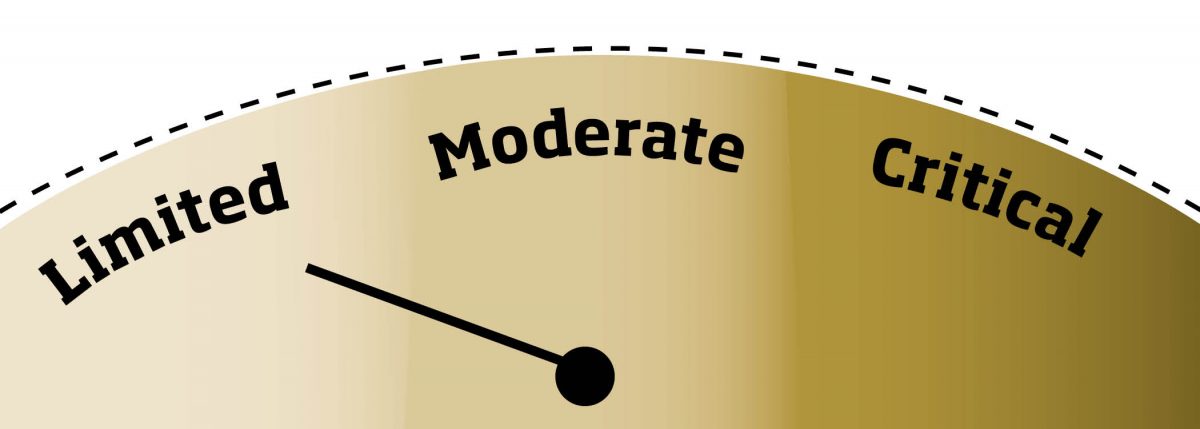
2021-2022
COVID-19 Info Hub
Click here to view all of the information below in a PDF — 2021-22 COVID-19 Handbook Addendum

Your community commitment as parents
By signing the COVID-19 Authorization & Release/Health & Wellness Pledge, you agree to the following:
-Screen family for symptoms each morning using this document as a guide.
-Stay home if directed by health screening protocols outlined below.
-Maintain and promote personal hygiene.
-Wear a mask when possible.
-Maintain physical & social distance.
Should you send your child to school?
Yes, if:
-Your student and all members of your student’s household are not exhibiting any symptoms related to COVID-19, e.g., fever, fatigue, chills, cough, shortness of breath and sore throat, new loss of smell of taste, muscle aches, or gastrointestinal problems.
-Your student and all members of your student’s household have not had person-to-person contact with someone who has exhibited COVID-19 symptoms in the last 14 days.
-Your student and all members of your student’s household have not visited an area where there has been a significant outbreak of COVID-19 activity in the last 14 days.
-Your student and all members of your student’s household have not had a fever in excess of 100.4 degrees for at least 24 hour without the use of fever-reducing medication.
-Your student and all members of your student’s household have measured your temperature within at least 1 hour prior to the start of the school day.
No, if:
-Your student or any member of your student’s household have been exhibiting any symptoms related to COVID-19, e.g., fever, fatigue, chills, cough, shortness of breath and sore throat, new loss of smell of taste, muscle aches, or gastrointestinal problems.
-Your student or any members of your student’s household have had person-to-person contact with someone who has exhibited COVID-19 symptoms in the last 14 days.
-Your student or any member of your student’s household have visited an area where there has been a significant outbreak of COVID-19 activity in the last 14 days.
-Your student or any member of your student’s household have had a fever in excess of 100.4 degrees for at least 24 hour without the use of fever-reducing medication.
-Your student or any member of your student’s household have not measured their temperatures within at least 1 hour prior to the start of the school day.
Health Screening Protocols

If you experience close contact with someone who tested positive:
-Stay home and monitor health
-Contact the school and provide appropriate information
-If asymptomatic, complete the appropriate quarantine protocol and return to school.
-If symptomatic, follow Experiencing COVID-19 Symptoms Protocol.
Quarantine is used to keep someone who might have been exposed to COVID-19 away from others. Quarantine helps prevent spread of disease that can occur before a person knows they are sick or if they are infected with the virus without feeling symptoms. People in quarantine should stay home, separate themselves from others, monitor their health, and follow directions from their state or local health department.
What counts as close contact?
- Within 6 feet of someone who has COVID-19 for a total of 15 minutes or more
- You provided care at home to someone who is sick with COVID-19
- You had direct physical contact with the person (hugged or kissed them)
- You shared eating or drinking utensils
- They sneezed, coughed, or somehow got respiratory droplets on you.
Exception: In the K–12 indoor classroom setting, the close contact definition excludes students who were within 3 to 6 feet of an infected student (laboratory-confirmed or a clinically compatible illness) if both the infected student and the exposed student(s) correctly and consistently wore well-fitting masks the entire time. This exception does not apply to teachers, staff, or other adults in the indoor classroom setting.
Public Health Recommendations:
Except in certain circumstances, people who have been in close contact with someone who has COVID-19 should quarantine. However, the following people with recent exposure may NOT need to quarantine:
People who have been fully vaccinated
People who were previously diagnosed with COVID-19 within the last three months
What is a secondary contact?
An individual who has had contact with someone identified as a Close Contact to a person who has tested positive for COVID-19. A secondary contact is not required to quarantine.
Click here for CDC information regarding quarantine and when to start and end quarantine.

If you experience COVID-19 symptoms:
- Temperature of 100.4 degrees Fahrenheit or higher when taken by mouth
- Sore throat
- New uncontrolled cough that causes difficulty breathing
- Diarrhea, vomiting, or abdominal pain
- New onset of severe headache, especially with a fever
- New loss of taste or smell
STAY AT HOME AND MONITOR HEALTH
| Symptoms without Close Contact/Potential Exposure | Symptoms with Close Contact/Potential Exposure |
| ○ Contact the school and provide appropriate information | ○ Contact the school and provide appropriate information |
| ○ Enhanced disinfecting protocols implemented | ○ Enhanced disinfecting protocols implemented |
| ○ Return to school when symptom free for 24 hours without fever reducing medications | ○ Seek an evaluation by a Healthcare Provider if symptoms are consistent with COVID-19 combined with Close Contact/Potential Exposure with a person with a confirmed COVID-19 |
| ○ Update the school with healthcare provider recommendations | |
| ○ Quarantine while awaiting results if COVID-19 testing is recommended | |
| ○ If NEGATIVE TEST RESULTS, return to school after completing appropriate quarantine and when symptom free for 24 hours without fever reducing medications | |
| ○ If POSITIVE TEST RESULTS, notify school immediately | |
| ○ CAC will contact ADH hotline (833-504-1055) | |
| ○ Contact tracing will be initiated | |
| ○ Return to school upon completion of 10 day quarantine and when symptom free for 24 hours without fever reduction |
School response to positive COVID-19 case

Limited Response
Cases (infection and/or exposure) are confirmed within a campus but spread is limited. It may involve closing one classroom or one cohort to assess risk, clean, disinfect, contact trace, and/or test. Quarantine is limited to specific students, staff members, groups, or teams. Return to school as soon as possible.
Moderate Response
Cases (infection and/or exposure) are confirmed within a campus with moderate but increasing levels of student and staff active cases, including evidence of linked cases within the school setting. A short term closure for the entire campus may be necessary to assess risk, clean, disinfect, contact trace, and/or test. Return to school as soon as possible.
Critical Response
Multiple cases are confirmed within a campus with substantial spread as determined by ADH. Staff and student infections significantly impacts delivery of on-campus instruction. An extended campus closure may be necessary as determined in collaboration with ADH.
Any decision about school dismissal or cancellation of school events will be made in coordination with local health officials. CAC does not make decisions about dismissals on our own. Initial short-term dismissal allows time for local health officials to gain a better understanding of the COVID-19 situation impacting the school and for staff to clean and disinfect affected areas. CAC will work with local health officials to determine appropriate next steps, including whether an extended dismissal duration is needed to stop or slow further spread of COVID-19. Our goal is to minimize disruption to on-campus learning.
Guidance on Face Coverings
The school will adhere to all ADH and DHS requirements. Currently there are no requirements; however, Centers for Disease Control and Prevention (CDC) recommends teachers, staff, and students wear cloth face coverings inside (click here and scroll to 2. Consistent and Correct Mask Use) when around people who live outside of their household, especially when other social distancing measures are difficult to maintain. This includes vaccinated individuals due to the “circulating and highly contagious Delta variant.” CDC has provided additional guidance that CAC has utilized to develop our face covering guidelines (click here and here).
The school has tried to follow a “common sense” approach related to our face covering policy. A key consideration has been the recognition that many students find it challenging to wear a mask for an extended period of time and younger children (e.g. preschool or early elementary aged) may be unable to consistently wear a mask properly. Our policies and procedures reflect these considerations. We have invested significant resources (human and financial) to modify class and common spaces to provide for physical distancing in as many school situations as possible. As a result, face coverings are not worn by our students for the majority of the school day. When physical distancing is not possible, we attempt to adhere to best practices guidelines to mitigate the risk of infection of our students and staff and reduce the potential for disruptions to the educational process by close contact quarantine requirements.
Early Childhood (PreK-3, PreK-4)
- Per Department of Human Services guidelines, preschool students are not required to wear masks.
- CAC requires wearing masks when feasible during arrival and departure times.
- Teachers may also have students wear masks for very limited age-appropriate periods inside when physical distancing is not feasible (e.g. circle time) and as a health/hygiene precaution.
- Parents should provide a Ziploc bag with the student’s name written in permanent marker on the outside of the bag. Student face coverings will be placed in the bag when not in use.
- Parents are asked to provide a spare face covering in a labeled Ziploc bag.
- All face coverings should be clearly labeled with the child’s name or initials.
- Parents may attach their child’s mask to a lanyard to promote mask retention. Teachers may opt to remove masks and lanyards if they become a distraction or safety/health concern.
- Students and staff will be allowed to wear an approved face covering of their choice. Coverings and lanyards must be free of writing, logos, figures, etc… with the exception of student name or initial.
- Students may be exempted from wearing a face covering due to documented health concerns.
Grades K-12
- Students must wear face coverings at all times indoors except for the following:
- Students may remove face coverings for eating and drinking;
- Students may remove face coverings when appropriate physical distancing measures are in place as determined by a CAC staff member;
- Students may remove face coverings on a case-by-case basis for specific instructional needs, including physical education activities, as determined by a teacher, in which case the teacher will require appropriate mitigation measures;
- Students may remove face coverings while participating in athletic activities where a six foot distance is not achievable, but a mask is inhibitory to the activity or active exercise;
- Parents/students should provide a Ziploc bag with the student’s name written in permanent marker on the outside of the bag. Student face coverings will be placed in the bag when not in use.
- Parents/students are asked to provide a spare face covering in a labeled Ziploc bag to be stored in their “home room”.
- All face coverings should be clearly labeled with the child’s name or initials.
- Parents/students may attach their child’s mask to a lanyard to promote mask retention. Teachers may opt to remove masks and lanyards if they become a distraction or safety/health concern.
- Students and staff will be allowed to wear an approved face covering of their choice. Coverings and lanyards must be free of writing, logos, figures, etc… with the exception of student name or initial.
- Students may be exempted due to documented health concerns.
CDC Guidance to Parents and Guardians Regarding Face Coverings
Cloth face coverings should not be worn by:
- Children younger than 2 years old.
- Anyone who has trouble breathing.
- Anyone who is unconscious, incapacitated or otherwise unable to remove the cloth face covering without assistance.
Actions to consider:
- Have multiple cloth face coverings, so you can wash them daily and have back-ups ready.
- Choose cloth face coverings that:
- Fit snugly but comfortably against the side of the face.
- Completely cover the nose and mouth.
- Are secured with ties or ear loops.
- Include multiple layers of fabric.
- Allow for breathing without restriction.
- Can be washed and machine dried without damage or change to shape.
- Label your child’s cloth face coverings clearly in a permanent marker so that they are not confused with those of other children.
- Practice with your child putting on and taking off cloth face coverings without touching the cloth.
- Explain the importance of wearing a cloth face covering and how it protects other people from getting sick.
- Consider talking to your child about other people who may not be able to wear cloth face coverings for medical reasons (e.g., asthma).
- As a family, model wearing cloth face coverings, especially when you are in situations where physical distancing is difficult to maintain or impossible.
- If you have a young child, help build their comfort wearing a cloth face covering and become comfortable seeing others in face covers.
- Praise your child for wearing a cloth face covering correctly.
- Put a cloth face covering on stuffed animals.
- Draw a cloth face covering on a favorite book character.
- Show images of other children wearing cloth face coverings.
- Allow your child to choose their cloth face covering that meets any dress requirements your school may have.
Actions in response to positive COVID-19 case by role:
Student who tests positive
• The COVID Positive Student will be notified that he/she is not allowed to return to work or school until he/she has received a negative COVID-19 test and provides documentation by a health care provider that he/she is released to return to school or work.
• Effective immediately, the classroom, office, or other area(s) at which the COVID Positive Student attended will be closed for disinfection and cleaning.
• The COVID Positive Student will be consulted to determine, within the last
fourteen (14) days, which employees/students were within six (6) feet of the COVID Positive Student for at least fifteen (15) minutes starting from two (2) days before illness onset (or, for asymptomatic individuals, two (2) days prior to positive specimen collection) until the time the COVID Positive Student is isolated (hereinafter referred to as “Close Contacts”).
• CAC will notify Close Contacts. The name of the COVID Positive Student will not be disclosed by CAC without consent of the employee/student.
• Notify all CAC employees in the relevant campus that a student or a
member of student’s household has tested positive for COVID-19. The name of the COVID Positive Student will not be disclosed by CAC without prior
consent.
Employee who tests positive
• The COVID Positive Employee will be notified that he/she is not allowed to return to work or school until he/she has received a negative COVID-19 test and provides documentation by a health care provider that he/she is released to return to school or work.
• Effective immediately, the classroom, office, or other area(s) at which the COVID Positive Employee worked or attended will be closed for disinfection and cleaning.
• The COVID Positive Employee will be consulted to determine, within the last fourteen (14) days, which employees/students were within six (6) feet of the COVID Positive Employee for at least fifteen (15) minutes starting from two (2) days before illness
onset (or, for asymptomatic individuals, two (2) days prior to positive specimen collection)
until the time the COVID Positive Employee is isolated (hereinafter referred to as “Close Contacts”).
• CAC will notify Close Contacts. The name of the COVID Positive
Employee will not be disclosed by CAC without consent of the employee/student.
• Notify all CAC employees in the relevant campus that an employee or a
member of employee’s household has tested positive for COVID-19. The name of the COVID Positive Employee will not be disclosed by CAC without prior consent.
Household member who tests positive
Students or staff within a family would be designated as a “close contact” and are required to quarantine per CDC guidelines. Students or staff who interacted with their “close contact” classmate/student are considered secondary contacts and are not required to quarantine.
Answers current as of 8/18/2021
- Are students and staff required to quarantine before returning to school if they have traveled to an area designated as a “hot spot” by ADH?
CAC adheres to all ADH Quarantine Orders for staff and students. Currently there are NO quarantine requirements for travelers entering Arkansas based on the location of their travel. Please check for ADH Executive Quarantine Orders before future travel to areas that may be considered “hot spots.”
*Please note absences during the school year are designated as excused or unexcused per school policy as outlined in the Student Handbook.
- Does the school screen for COVID-19 symptoms?
Preschool — DHS no longer requires symptom and temperature screening of all preschool students and staff prior to entering the school building.
K-12 — Effective July 23, 2020, CDC does not currently recommend universal symptom screenings (screening all students K-12) be conducted by schools. Daily before school at home screening is required of all students and staff.
- What happens if a student displays symptoms of infectious illness while at school?
Students who develop any COVID-19 symptoms while at school will be placed in isolation per CDC guidelines until they go home or to a healthcare facility. Parents should be prepared to immediately pick their child up from school.
- May students attend on-campus instruction if they display COVID-19 symptoms as a result of a non-infectious medical condition?
Yes. Families must provide the school with a physician’s statement documenting the condition.
- Is everyone in a class required to quarantine if one person in the class contracts COVID-19?
Any person who meets the definition of “close contact” with a COVID-19 positive individual will be required to quarantine. We have implemented multiple mitigation strategies to reduce close contact between students and staff (e.g. classroom reconfiguration to meet physical distancing guidelines, limited student movement, installation of physical barriers when feasible and appropriate). Strict adherence to mitigation strategies may reduce the number of close contacts within a cohort. Quarantine decisions will be made in consultation with ADH. - What are school protocols when a parent or other family member tests positive for COVID-19?
Students or staff within that family would be designated as a “close contact” unless they have been vaccinated or were previously diagnosed with COVID-19 within the last three months and are required to quarantine per CDC guidelines. Students or staff who interacted with a “close contact” classmate/student are considered secondary contacts and are not required to quarantine.

